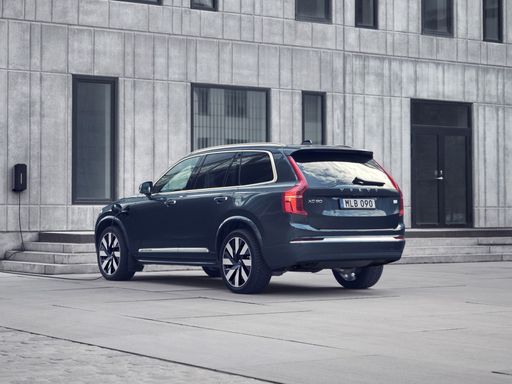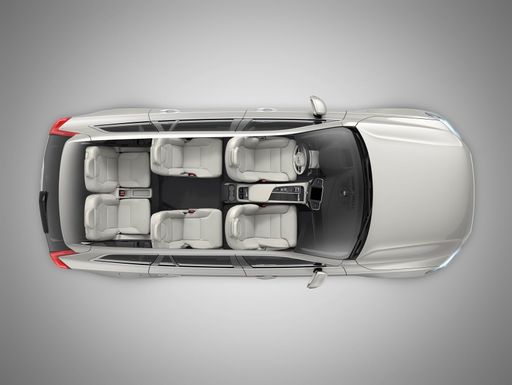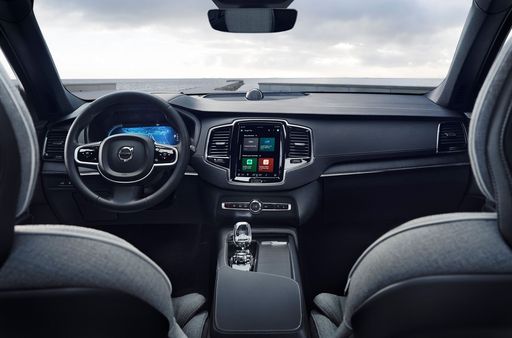Alfa Romeo Junior vs Volvo XC90 – Which car suits you better?
Compare performance, boot capacity, efficiency and price at a glance.
Find out which car is the better choice for you – Alfa Romeo Junior or Volvo XC90?
Costs and Efficiency:
Price and efficiency are often the first things buyers look at. Here it becomes clear which model has the long-term edge – whether at the pump, the plug, or in purchase price.
Alfa Romeo Junior has a significantly advantage in terms of price – it starts at 25700 £, while the Volvo XC90 costs 69800 £. That’s a price difference of around 44091 £.
Fuel consumption also shows a difference: Volvo XC90 manages with 3.50 L and is therefore noticeable more efficient than the Alfa Romeo Junior with 4.80 L. The difference is about 1.30 L per 100 km.
As for range, the Alfa Romeo Junior performs significantly better – achieving up to 410 km, about 339 km more than the Volvo XC90.
Engine and Performance:
Power, torque and acceleration say a lot about how a car feels on the road. This is where you see which model delivers more driving dynamics.
When it comes to engine power, the Volvo XC90 has a distinct edge – offering 455 HP compared to 280 HP. That’s roughly 175 HP more horsepower.
In acceleration from 0 to 100 km/h, the Volvo XC90 is hardly perceptible quicker – completing the sprint in 5.40 s, while the Alfa Romeo Junior takes 5.90 s. That’s about 0.50 s faster.
In terms of top speed, the Alfa Romeo Junior performs somewhat better – reaching 206 km/h, while the Volvo XC90 tops out at 180 km/h. The difference is around 26 km/h.
There’s also a difference in torque: Volvo XC90 pulls convincingly stronger with 709 Nm compared to 345 Nm. That’s about 364 Nm difference.
Space and Everyday Use:
Beyond pure performance, interior space and usability matter most in daily life. This is where you see which car is more practical and versatile.
Seats: Volvo XC90 offers evident more seating capacity – 7 vs 5.
In curb weight, Alfa Romeo Junior is decisively lighter – 1380 kg compared to 2080 kg. The difference is around 700 kg.
In terms of boot space, the Alfa Romeo Junior offers evident more room – 415 L compared to 302 L. That’s a difference of about 113 L.
In maximum load capacity, the Volvo XC90 performs evident better – up to 1856 L, which is about 576 L more than the Alfa Romeo Junior.
When it comes to payload, Volvo XC90 clearly takes the win – 710 kg compared to 420 kg. That’s a difference of about 290 kg.
Who comes out on top?
Overall, the Alfa Romeo Junior shows itself to be wins solidly and secures the title of DriveDuel Champion.
It convinces with the more balanced overall package and proves to be the more versatile choice for everyday use.
 @ Alfa Romeo / Stellantis Media
@ Alfa Romeo / Stellantis Media
Alfa Romeo Junior
Alfa Romeo Junior
The Alfa Romeo Junior captures the essence of Italian design with its sleek lines and compact dimensions, making it an icon of elegance and performance. With a spirited driving experience and a charming retro aesthetic, it appeals to enthusiasts and casual drivers alike. This delightful car embodies the brand's rich heritage while remaining a fun and engaging option for those seeking a unique automotive experience.
details @ Alfa Romeo / Stellantis Media
@ Alfa Romeo / Stellantis Media
 @ Alfa Romeo / Stellantis Media
@ Alfa Romeo / Stellantis Media
 @ Alfa Romeo / Stellantis Media
@ Alfa Romeo / Stellantis Media
Volvo XC90
The Volvo XC90 stands out with its elegant Scandinavian design, seamlessly blending luxury with versatility. Inside, it offers a spacious and meticulously crafted interior, showcasing high-quality materials and advanced technology. The vehicle provides a comfortable and smooth driving experience, making it a popular choice for families and long journeys.
details @ Volvo Cars
@ Volvo Cars
 @ Volvo Cars
@ Volvo Cars
 @ Volvo Cars
@ Volvo Cars
 @ Volvo Cars
@ Volvo Cars
 @ Volvo Cars
@ Volvo Cars
 @ Alfa Romeo / Stellantis Media
@ Alfa Romeo / Stellantis Media
|
 @ Volvo Cars
@ Volvo Cars
|
|
|
|
Costs and Consumption |
|
|---|---|
|
Price
25700 - 41600 £
|
Price
69800 - 84600 £
|
|
Consumption L/100km
4.8 - 5.4 L
|
Consumption L/100km
3.5 - 8.5 L
|
|
Consumption kWh/100km
15.1 - 17.5 kWh
|
Consumption kWh/100km
-
|
|
Electric Range
344 - 410 km
|
Electric Range
71 km
|
|
Battery Capacity
0.4 - 51 kWh
|
Battery Capacity
14.70 kWh
|
|
co2
0 - 119 g/km
|
co2
79 - 191 g/km
|
|
Fuel tank capacity
44 - 45 L
|
Fuel tank capacity
71 L
|
Dimensions and Body |
|
|---|---|
|
Body Type
SUV
|
Body Type
SUV
|
|
Seats
5
|
Seats
7
|
|
Doors
5
|
Doors
5
|
|
Curb weight
1380 - 1689 kg
|
Curb weight
2080 - 2297 kg
|
|
Trunk capacity
340 - 415 L
|
Trunk capacity
262 - 302 L
|
|
Length
4173 mm
|
Length
4953 mm
|
|
Width
1781 mm
|
Width
1923 mm
|
|
Height
1505 - 1538 mm
|
Height
1771 mm
|
|
Max trunk capacity
1205 - 1280 L
|
Max trunk capacity
1816 - 1856 L
|
|
Payload
390 - 420 kg
|
Payload
653 - 710 kg
|
Engine and Performance |
|
|---|---|
|
Engine Type
Electric, Petrol MHEV
|
Engine Type
Petrol MHEV, Plugin Hybrid
|
|
Transmission
Automatic
|
Transmission
Automatic
|
|
Transmission Detail
Dual-Clutch Automatic, Reduction Gearbox
|
Transmission Detail
Automatic Gearbox
|
|
Drive Type
Front-Wheel Drive, All-Wheel Drive
|
Drive Type
All-Wheel Drive
|
|
Power HP
136 - 280 HP
|
Power HP
250 - 455 HP
|
|
Acceleration 0-100km/h
5.9 - 9.1 s
|
Acceleration 0-100km/h
5.4 - 7.7 s
|
|
Max Speed
150 - 206 km/h
|
Max Speed
180 km/h
|
|
Torque
230 - 345 Nm
|
Torque
360 - 709 Nm
|
|
Number of Cylinders
3
|
Number of Cylinders
4
|
|
Power kW
100 - 207 kW
|
Power kW
184 - 335 kW
|
|
Engine capacity
1199 cm3
|
Engine capacity
1969 cm3
|
General |
|
|---|---|
|
Model Year
2024 - 2025
|
Model Year
2024 - 2025
|
|
CO2 Efficiency Class
A, C, D
|
CO2 Efficiency Class
G, B
|
|
Brand
Alfa Romeo
|
Brand
Volvo
|
What drive types are available for the Alfa Romeo Junior?
Available configurations include Front-Wheel Drive or All-Wheel Drive.
The prices and data displayed are estimates based on German list prices and may vary by country. This information is not legally binding.
